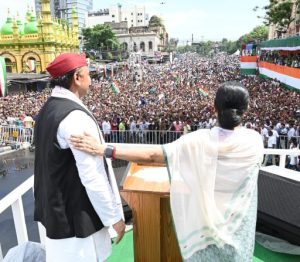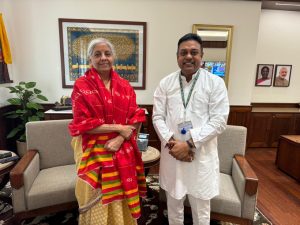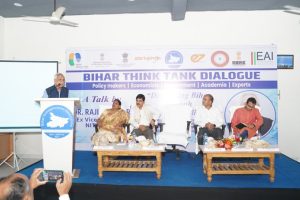G-20, 2023 maps vision for global unity

By Rahul Kumar Dubey
New Delhi, November 9: The G20, whose might may be gauged by the fact that its member countries contribute for approximately 85 per cent of world GDP, over 75 per cent of international commerce, and approximately 67 per cent of global population, is the strongest international grouping in the world. India takes the Presidency of the G20 at a crucial time when the global economy is faced with slowdown.
The Covid-19 outbreak, the Russia-Ukraine confrontation, and other geopolitical events have fractured the world. As a result, India is expected to launch a push for “re-uniting” the globe, aiming at its holistic development and a better world order. In capitalising on the possibilities that a crisis hit world is certain to provide, the Narendra Modi government has devised a design that would conclude in an extraordinary leader’s summit in September 2023. On November 8, 2023, Prime Minister Narendra Modi unveiled the logo, theme, and website of India’s G20 Presidency for the Summit 2023, one of the most powerful and significant international assemblies ever convened by India.
With its philosophy of ‘One Sun, One World, One Grid,’ India has pushed for a worldwide non-fossil fuel energy renaissance, while with a view to boost global health, India has taken up the ‘One World, One Health’ mission. India’s motto in the G20, thus, is ‘One Earth, One Family, One Future’, striving towards global well-being.
The vivid colours of India’s national flag – saffron, white, green, and blue, has inspired the G20 logo. It envelopes the globe with India’s national flower lotus, that depicts prosperity in the face of adversity, while the seven lotus petals of the logo stand for the seven continents. Seven is also the number of notes in music’s universal language, which despite being distinct, when combines in music, produce a perfect and melodious harmony. The Earth depicts India’s pro-planet lifestyle, which is in perfect balance with nature, while the word “Bharat” is inscribed in Devanagari script beneath the G20 logo.
The logo incorporates components from several entries received during an open competition for logo design, with almost 2000 contributions, via contest conducted on the MyGov platform, which received a positive reaction. This is consistent with Prime Minister’s Jan Bhagidari’s aim for India’s G20 presidency. The theme of India’s G20 presidency, “Vasudhaiva Kutumbakam,” or “One Earth, One Family, One Future,” is inspired from the Maha Upanishad, an ancient Sanskrit literature. The idea fundamentally emphasises the importance of all life – be it human, animal, plant, and microbe.
The theme additionally highlights LiFE (Lifestyle for Environment), including its related ecologically sustainable and accountable actions, at the independent lifestyle and national transformation stages, contributing to internationally transformative actions that result in an ecologically sustainable future. Together, the logo and theme convey the strong message of India’s G20 Presidency: aiming for just and equitable growth for all in the globe as we navigate through these challenging times in a sustainable, comprehensive, responsible, and inclusive manner.
The G20 Presidency also marks the start of “Amritkaal” for India, a 25-year timeframe commencing with its 75th anniversary of independence on 15th August 2022 and marching up to its centennial of independence, into a futuristic, flourishing, inclusive, and developed society characterised by an altruistic approach. The Prime Minister also unveiled the website of India’s G20 Presidency, www.g20.in. On December 1, 2022, the day India assumes the G20 Presidency, the website will automatically move to the G20 Presidency website, www.g20.org. The website would be used to construct and act as a repository of G20 material, in addition to credible information about the G20 and logistics considerations. The website also has feature where citizens may contribute recommendations.
(Author is a Research Fellow, Public Policy Research Center)







